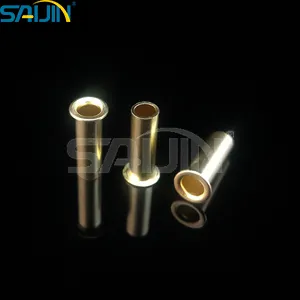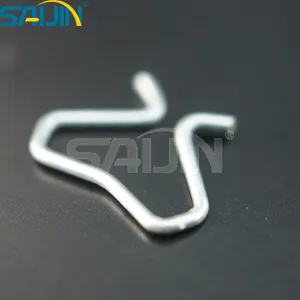Electrical contact points are crucial components in various electrical and electronic devices, responsible for establishing and interrupting electrical circuits. The choice of materials for these contact points is critical as it directly affects their performance, durability, and efficiency. A wide range of materials is used, each with its unique properties suited for specific applications.
Key Materials for Electrical Contact Points
1. Silver
Properties: Boasts excellent electrical conductivity (second only to gold) and good thermal conductivity, which helps dissipate heat during current flow. Prone to tarnishing, forming a silver sulfide layer, but this layer still has relatively good conductivity compared to oxides of other metals.
Applications: Widely used in switches, relays, and circuit breakers where high conductivity is a priority.
2. Copper
Properties: Has high electrical conductivity and is relatively low-cost due to its abundance. However, it oxidizes easily, forming a copper oxide layer with poor conductivity that increases contact resistance.
Mitigation: Often plated with silver or tin to prevent oxidation.
Applications: Commonly found in electrical connectors, motors, and transformers.
3. Gold
Properties: Offers exceptional resistance to corrosion and tarnishing, maintaining conductivity even in harsh environments (high humidity, chemicals, salt spray).
Limitations: High cost, limiting use to applications where reliability is paramount.
Applications: Ideal for small-scale contacts in aerospace, medical devices, high-end electronics, printed circuit board connectors, and precision instruments.
4. Tungsten
Properties: A refractory metal with an extremely high melting point, excellent arc resistance, and good mechanical strength. Has relatively low electrical conductivity compared to silver and copper.
Usage: Often used in combination with other materials to balance conductivity and high-temperature performance.
Applications: Suitable for high-current and high-temperature applications, such as circuit breakers and contactors where arcs form during switching.
5. Platinum and Palladium
Properties: Noble metals with excellent corrosion resistance and stability at high temperatures. Platinum has a higher melting point and better chemical resistance but is more expensive; palladium is a cost-effective alternative. Both have good electrical conductivity.
Forms: Often used in thin films or as coatings on other base metals.
Applications: Used in automotive sensors, industrial control systems, and aerospace electronics where reliability and long-term performance are critical.
6. Silver Alloys
Purpose: Improve the properties of pure silver by adding elements like copper, nickel, or cadmium.
Silver-copper alloys: Have better mechanical strength, suitable for applications with wear and tear.
Silver-nickel alloys: Offer improved arc resistance, ideal for high-current switches and relays.
Advantage: Combine silver’s high conductivity with the desirable properties of added elements, making them versatile for various applications.
7. Base Metals with Plating
Structure: Base metals (brass, copper, steel) provide a strong substrate, while a thin layer of precious metal (silver, gold, palladium) is plated on the surface for conductivity and corrosion resistance.
Plating Thickness: Varies by application, with thicker platings for demanding environments.
Advantage: Cost-effective, leveraging low-cost base metals while achieving required performance.
Applications: Commonly used in electrical connectors, switches, and sockets.
Advantages of Electrical Contacts
Enable efficient electrical current transmission, ensuring proper device operation.
Have low contact resistance, minimizing energy loss and heat generation.
Offer high reliability, withstanding repeated switching without significant degradation.
Provide good corrosion resistance, allowing operation in diverse environments for consistent performance.
Can quickly and safely interrupt and establish circuits, preventing device damage and ensuring user safety.
Applications of Electrical Contacts
Automotive industry: Ignition systems, switches, connectors.
Aerospace sector: Avionics, navigation systems, power distribution systems.
Consumer electronics: Switches, connectors, relays in smartphones, laptops, and household appliances.
Industrial machinery: Control systems, motors, power distribution.
Other areas: Medical devices, telecommunications equipment, and renewable energy systems.
Conclusion
Electrical contact points are key for circuit operation, with material choice affecting performance. Key materials: silver (high conductivity, switches); copper (cost-effective, often plated to resist oxidation); gold (corrosion-resistant, high-reliability uses); tungsten (high melting point, high-current scenarios); platinum/palladium (high-temp stability, critical systems); silver alloys (enhanced properties); base metals with plating (cost-effective). They offer efficient transmission, low resistance, reliability, corrosion resistance, and safe control, used in automotive, aerospace, electronics, and industry.
FAQ
Q1. What factors influence material choice for electrical contacts?
A: Conductivity, corrosion/tarnish resistance, temperature/current levels, mechanical strength, cost, and operating environment.
Q2. Why use gold in high-end electronics despite cost?
A: Its superior corrosion/tarnish resistance ensures reliable conductivity in harsh environments, justifying the cost.
Q3. How do silver alloys improve pure silver?
A: Adding elements (copper, nickel, etc.) boosts strength (silver-copper) or arc resistance (silver-nickel), combining conductivity with enhanced traits.
Q4. Why plate base metals for contacts?
A: Base metals provide a strong substrate; precious metal plating adds conductivity and corrosion resistance, balancing cost and performance.
Q5. Where are tungsten contacts most suitable?
A: High-current, high-temperature applications like circuit breakers, due to its high melting point and arc resistance.











